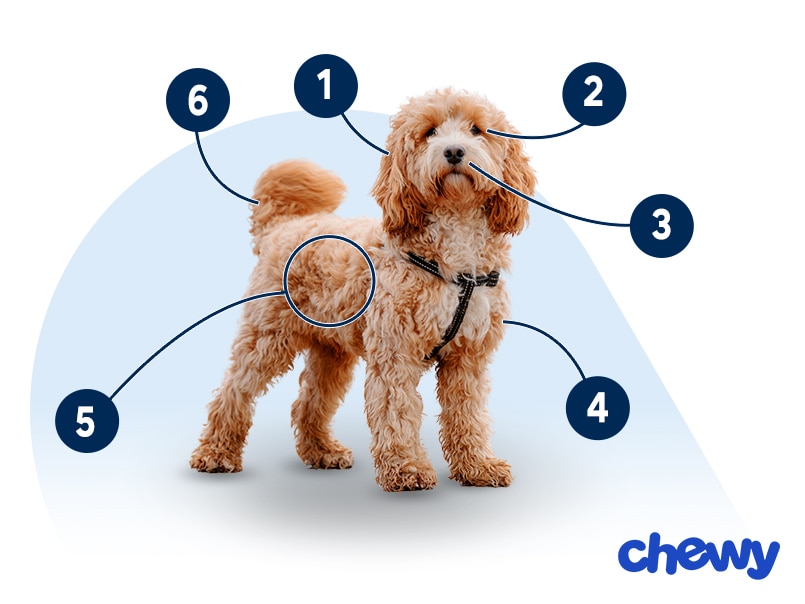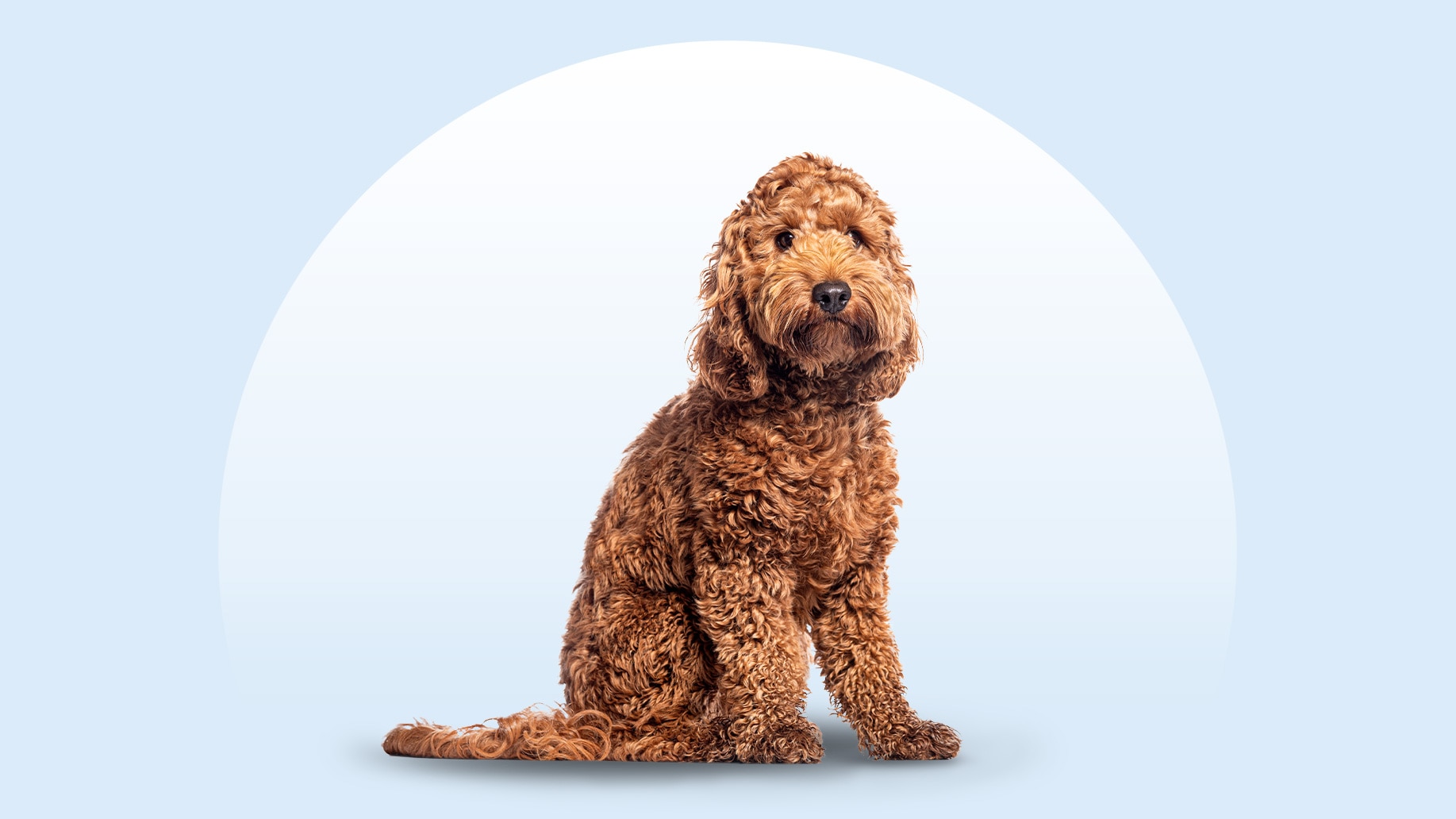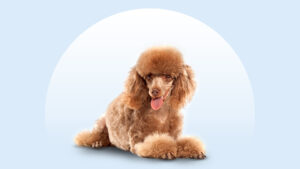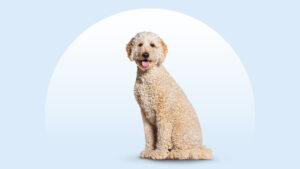Cockapoo
Updated May 5, 2025
Cockapoo
Updated May 5, 2025
The Cockapoo, a cute cross between a Poodle and a Cocker Spaniel, is renowned for being gregarious and energetic. Part zoomie champion, part cuddle bug, this curly coated charmer is totally loyal to their favorite people and loves to meet new friends.
Friendly, Energetic, Intelligent
12–22 pounds
10–18 inches
14–18 years
Black, White, Buff, Cream, Apricot, Red, Chocolate, Parti-color, Phantom, Sable, Tricolor, Merle, Roan
Prepare yourself for a lifetime of wet kisses, tail wags, and unceasing affection—your Cockapoo is about to win your heart.
Cockapoos are a mix between a Cocker Spaniel and one of the three types of Poodle:
- A Toy Cockapoo has a Toy Poodle parent and often weighs under 12 pounds.
- A Mini Cockapoo has a Miniature Poodle parent, often weighing 12–20 pounds. This is the most common Cockapoo size.
- A Standard Cockapoo has a Standard Poodle parent and tips the scale at 20 pounds or more.
No matter their size, Cockapoo dogs are full of personality, and will gladly greet any new companion (whether they are four-legged or two-legged) and insist they join in the fun.
Cockapoo Characteristics
Cockapoo Appearance
The Cockapoo is a small- to medium-sized bundle of fluff with a cuddly, teddy bear–like look. Their soft wavy or curly coat; round, soulful eyes; and floppy ears make them extra adorable. Always full of energy and tail wags, these happy pups bring joy everywhere they go.

- Ears
The long, floppy Cockapoo ears hang at the top of their head.
- Eyes
Their round, expressive eyes are often brown, and convey the breed's kind and perceptive disposition.
- Nose
Cockapoos usually have a brown or black nose, depending on the color of their coat.
- Coat Length
A Cockapoo’s coat can range in length and texture, from short and curly to long and wavy, to somewhere in between.
- Coat Color
Cockapoos can be black, white, buff, cream, red, apricot, chocolate, and a variety of other colors. They could also be parti-colored (patches of color), roan (an even mix of white and colored hairs), merle (mottled patches of color), or phantom (black with brown markings).
- Tail
Cockapoos typically have a medium-length tail. Their tail is sometimes docked like their Cocker Spaniel and Poodle parents, though this is a controversial practice that many groups, including the American Veterinary Medical Association, oppose.
Cockapoo Temperament
Cockapoos are known for being happy, caring, and people-oriented, and they’re at their best when surrounded by family.
As social and friendly dogs, they’re great with kids, welcoming to strangers, and usually get along well with other pets. All of these traits make Cockapoo puppies a great pick for first-time pet parents.
Though they’re descended from working dogs (the Poodle and Cocker were both originally hunting dogs), Cockapoos are happier living the unemployed life. This way, they can focus their energy on the family they love. (That’s you!)
Regular strolls, belly rubs, and a comfortable spot on the sofa are non-negotiables for this family dog.
How to Care for a Cockapoo
Adorable, active, and people-oriented puppies, Cockapoos flourish in homes with lots of love and activity.
Though they require regular grooming, exercise, and affection to remain happy and healthy, Cockapoos are often easy to train due to their smarts and eager-to-please personality.
Grooming
Training
Diet
Exercise
Environment
Cockapoo Health
The average Cockapoo lifespan is 14–18 years, and they’re typically healthy dogs. But all dogs, Cockapoos included, can develop certain health conditions during life.
- Ear infections: A Cockapoo’s long, floppy ears are more likely to develop ear infections than breeds with pricked-up ears. Chat with your vet if you notice signs of an infection (like redness, debris buildup, or odor)—they’ll give guidance on how to treat the infection and prevent the condition in the future.
- Allergies and skin problems: If your Cockapoo gets recurring ear infections, it may be due to allergies. Allergies in dogs can also cause skin irritation, redness, and itching. Talk to your vet if you notice any of these.
- Hip dysplasia: This hereditary disorder arises when the hip joint fails to grow normally, which may result in arthritis and problems with movement. The risk of hip dysplasia may be decreased with weight management and joint supplements, though surgery is sometimes recommended.
- Patellar luxation: Small- to medium-sized dogs frequently experience patellar luxation, a condition in which the kneecap slides out of position. Your vet may recommend surgery for severe cases.
- Progressive retinal atrophy: PRA is a group of degenerative eye conditions that can eventually cause blindness. To lower the risk in puppies, ethical breeders frequently check for this hereditary disease.
- Cataracts and glaucoma: As Cockapoos age, they may be more susceptible to eye conditions such cataracts and glaucoma. Keep up with regular veterinary exams for early detection.
- Hypothyroidism: This hormonal imbalance can lead to weight gain, lethargy, and skin issues. It’s typically manageable with daily medication.
Cockapoo History
Because the Cockapoo is a mixed breed, the dogs’ history is a little murky. The Cocker Spaniel-Poodle cross gained popularity with many other designer breeds, like the Goldendoodle and Labradoodle, in the 20th century. Bred to be a friendly, low-shedding companion, the Cockapoo quickly became a popular family pet.
While not recognized by the American Kennel Club, the breed is supported by clubs like the American Cockapoo Club, which promotes responsible breeding and standards.








